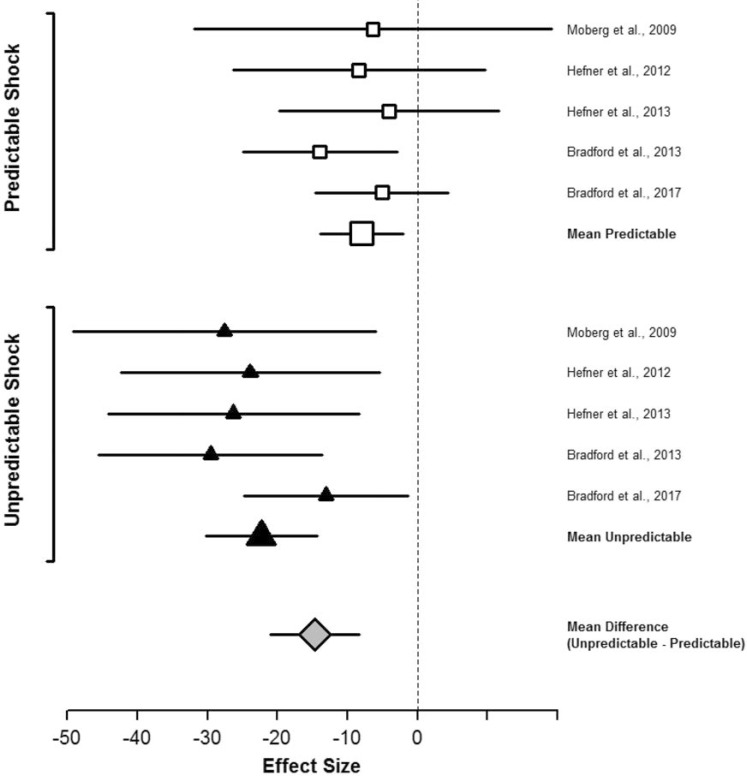Figure 3.
Alcohol effect sizes for startle potentiation to predictable and unpredictable shock. This forest plot depicts the size of the effect of alcohol administration on startle potentiation to predictable and unpredictable shock across five independent studies. These five studies tested the effect of a single administration of alcohol on distinct manipulations of unpredictability based on the timing and probability combined (i.e., the NPU task; Moberg & Curtin, 2009; n = 64), timing alone (Hefner et al., 2013; n = 68), probability (Hefner & Curtin, 2012; n = 120), intensity (Bradford et al., 2013; n = 89), and location (Bradford et al., 2017; n = 94) of the shock threat. Study effect sizes depict the difference in startle potentiation (in pV) between intoxicated (target blood alcohol concentration = .08%) and sober participants. The figure also includes the variance weighted, mean effect sizes across studies for alcohol on startle potentiation to unpredictable and predictable shock and on the difference between unpredictable and predictable shock (i.e., the Alcohol x Threat Type interaction). Error bars depict 95% confidence intervals surrounding each effect size. Confidence intervals that do not overlap 0 indicate significant effects of alcohol.
Alcohol produced significantly greater reduction in startle potentiation to unpredictable than predictable shock in every study. The mean size of alcohol’s effect across studies was approximately three-fold greater for unpredictable than predictable shock.
Figure © Jesse Kaye, Daniel Bradford, Katherine Magruder, & John Curtin. Reprinted with permission.

